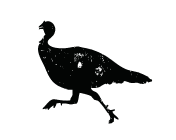Tweak your dabbler spreads for maximum attraction

Editor's note: This blog originally appeared Nov. 15, 2016 on Realtree.com
Diving-duck hunters seem more decoy-centric, but dabbler fans need decoys, too. Puddlers usually demand some visual attraction, even at hot holes and with great calling.
As with the big-water game, one puddle-duck spread doesn't suit all conditions. Large reservoirs and small potholes call for drastically different setups, but it goes deeper. Here are some puddler-spread tweaks I've learned — mostly via hard experience.
Which Ducks?
On my home water in the Midwest, puddle-duck spreads are pretty vanilla. Basically, they consist of mallards and, if you're feeling funky, maybe some wood ducks. But when I travel west to the prairies, horizons expand considerably. Often, you're trying to decoy pintails, wigeon and gadwalls, and some decoys of different colors help. (That doesn't mean we don't shoot pintails, wigeon and gadwalls where I live. The Central Flyway just has far more of those birds.)
My Western spread usually consists of mostly mallards, a good number of gray ducks, a smattering of wigeon and at least one drake pintail. If sprigs or cottontops seem to be on the menu, I make sure the white colors of the wigeon and pintail are front and center in the spread to provide extra attraction. On the flip side, if we're hunting what appears to be an all-gadwall hole, I might keep the white ducks in the bag. Incidentally, the white ducks can double as a makeshift tail if you encounter prairie divers, too.
Here's one more species specialization note that works anywhere. Consider adding one or two black ducks to your mallard setup. Regardless of the species present, the dark colors of the black duck fakes provide a great visual contrast to your drab hen mallards and bright greenheads.
Shape Shifting
Puddle-duck specialists are almost as bad as diver nuts when it comes to decoy spread shapes. Many demand that each individual block be placed precisely. I'm not that crazy, but I want every decoy to serve a purpose.
In small potholes or streams, a simple stool of a few decoys works just fine, as it mimics a small group of loafing or feeding birds. On larger waters, spread shape becomes more important, because you're trying to entice ducks to land in good shooting distance and dissuade them from landing where you don't want them. That usually means leaving a large hole amidst the main body of decoys and then using other blocks to fill in holes — think channels, the other side of a point or a small inlet — so ducks won't try to sneak into those spots. Remember, divers love to fly over their own kind on approach, like a jet following a runway to a landing. Puddlers generally do not. They typically seek open holes.
Spread is especially critical when you're hunting huge water, like a big Southern reservoir or large natural lake. Just expand the approach you'd take on a pothole. Use plenty of colorful decoys for visibility, of course, but leave a large landing hole, and try to cut off areas where you don't want birds to finish.
Birds in Motion
Wind moves decoys naturally typically negating the need for added motion. During calm conditions, however, that burden falls on you. Ducks on the water constantly move and bustle about, so decoys sitting motionless on a mirror-like marsh look unnatural.
Spinning-wing decoys provide great attraction for distant birds, of course. Many folks debate the effectiveness of spinners, but these truths seem to hold up: They're a must for field ducks, they sometimes help when hunting big water, and they work well in situations with lots of young birds (think opening day in Northern states). However, you always want to use a model with a remote-controlled on-off switch. Turning the wings off as ducks make a serious approach helps birds finish.
Other modes of motion often work better, especially with pressured birds. These include jerk rigs, moving feeder decoys, commercially available motion systems or similar rigs. Use whatever you can afford and transport, even if it's just a simple one-duck jerk string. A little dash of natural movement on the water often spells the difference between flaring birds and feet-down, wings-back finishes.
Think on the Water
As with diver decoys, don't get too rigid in your approach. Always pay attention to how birds react to your spread, and don't be afraid to tweak the decoys during a hunt. Sure, you'll miss out on chances at a few birds by doing so, but you'll usually enjoy a better overall hunt. And if you have to lug all those decoys out at day's end, you might as well add a nice strap of ducks to your load.
Click here for more Realtree waterfowl hunting content. And check us out on Facebook.































